For anyone who hasn’t had the chance to visit the Johnson County Museum’s special exhibit, TRAINS: Transportation and the Transformation of Johnson County, you might be thinking: how much change did railroads really bring to a county that today has a modern, suburban, automobile-centered landscape? The TRAINS exhibit makes it clear that railroads transformed elements of Johnson County’s landscape, economy, society, and population. Access to the railroads held the fate of whole towns – including town names. Here are five examples of Johnson County, Kansas towns (past and present) named as a direct result of the railroads.
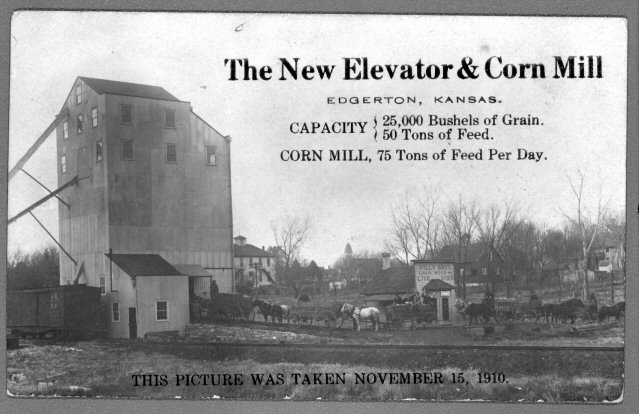
Edgerton
Edgerton’s connection with railroads is so deep, it predates the official founding of the town! A predecessor of the Santa Fe Railroad (today the Burlington, Northern and Santa Fe or BNSF) laid tracks through the southwestern portion of the county in 1870, and Edgerton was founded soon after as Martinsburg. The community’s name was quickly changed to honor of the railroad’s chief construction engineer, Benjamin H. Edgerton. The depot in Edgerton served both passengers and freight, and local grain crops were shipped through nearby grain elevators and mills. But, like a lot of rural communities, the rail depot also served another purpose: entertainment. As lifelong resident, Ray Braun said in a 2004 oral history, “a lot of people would go down to the depot and meet the train just to see who’d get off.” The Edgerton depot closed in 1971 and was later demolished. Learn more about Benjamin Edgerton.
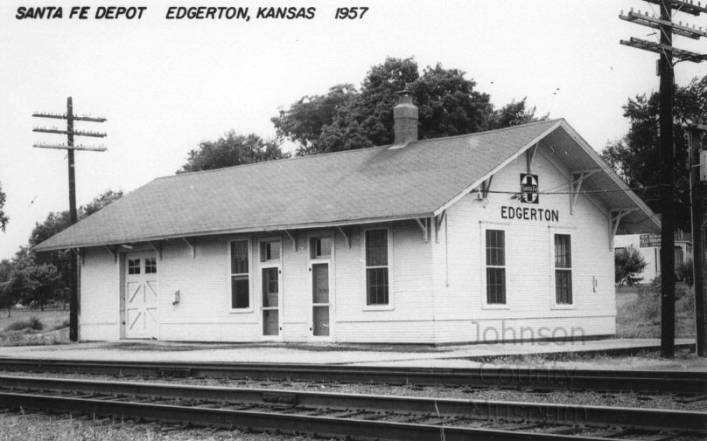
Holliday
Residents in Johnson County today might not be familiar with Holliday. The area is located along Mill Creek where it enters the Kansas River, west of I-435. The town was originally founded in 1881 as Waseca but was renamed when the Santa Fe Railroad came through in 1885. The new name honored Santa Fe Railroad founder and staunch Kansas advocate, Col. Cyrus K. Holliday. Holliday was one of the main forces behind railroad construction in Kansas, having founded what became the Santa Fe Railroad in 1859 with the vision of connecting Kansas City to the Santa Fe Trail trade from México.
Holliday’s depot was important to local residents and the county’s economy. Like many areas along the Kansas River bottoms, Holliday’s farmers grew a number of crops in the rich soil, especially potatoes. The Holliday depot was enlarged in 1909 for both freight and passengers but closed in 1949. It was severely damaged by the 1951 Kansas River Flood and was later demolished. Learn more about Cyrus K. Holliday.
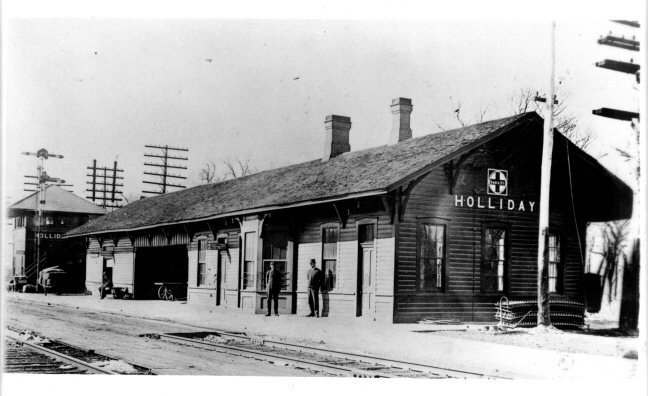
Wilder
Like Holliday, Wilder was a small rural community of northern river bottom farmers. It was located where K-7 bridges the railroad tracks south of the Kansas River. Wilder’s Santa Fe Railroad depot was a gathering point and was extremely busy during harvests. In the early 20th century, Wilder shipped out nearly 1,200 freight cars of Kaw Valley potatoes per year! The town was likely named for Edward Wilder, a secretary-general and treasurer for the Santa Fe Railroad. The Wilder depot was severely damaged in the 1951 Kansas River Flood and was demolished. Learn more about Edward Wilder.
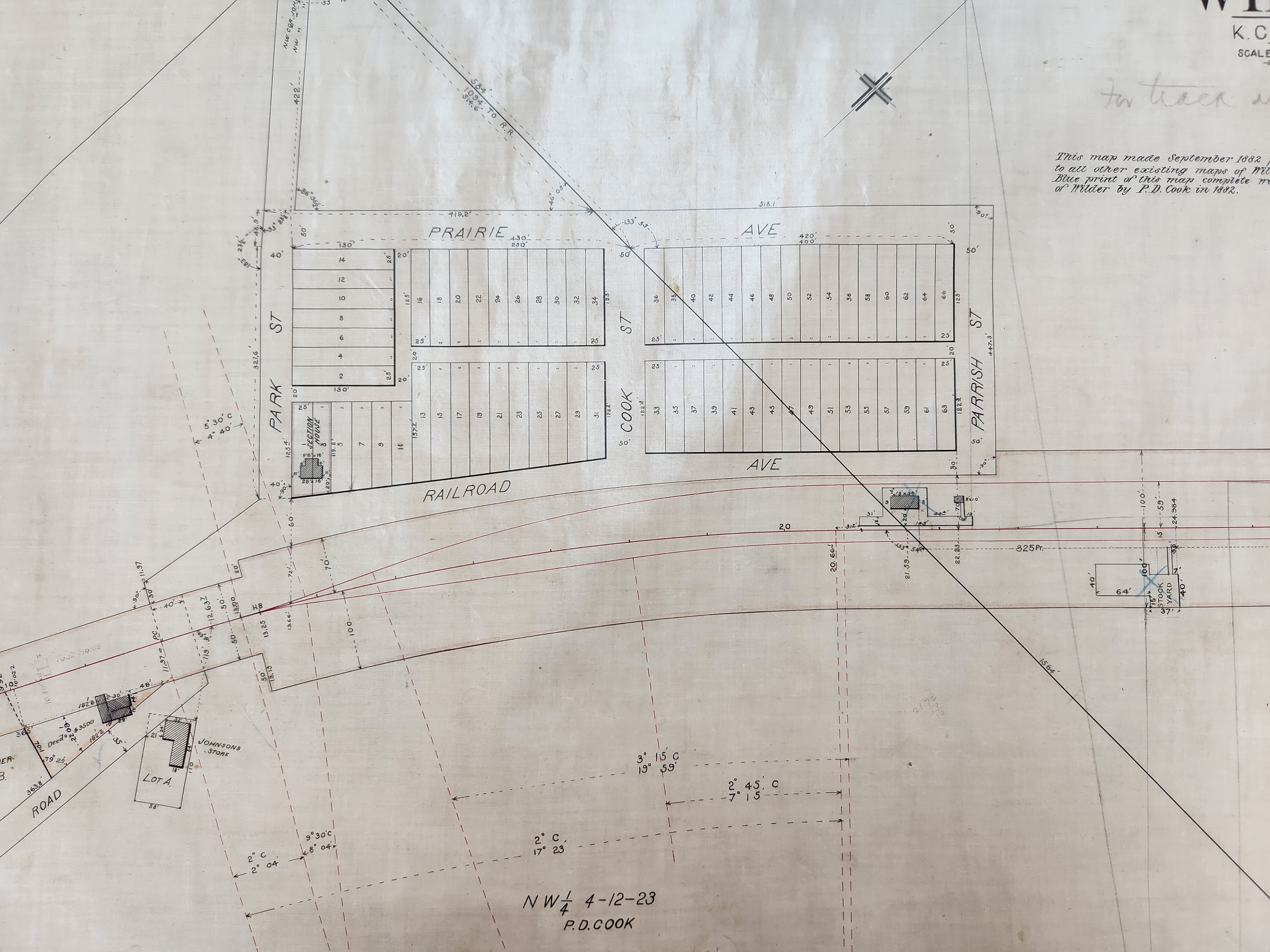
Merriam
The City of Merriam derived its name from the railroad as well. The town was called Campbellton when it was founded in 1864 to honor David Gee Campbell, an area landowner, railroad advocate, and employee of the Kansas City, Fort Scott and Gulf Railroad. That railroad built track through the area in 1870, and Campbell later advocated for a second set of tracks through the town (which, ironically and tragically, caused his death one night when he crossed the second set of tracks in front of an oncoming train).
Campbellton was renamed in 1880, while Campbell was still living, to honor Charles Merriam, a secretary-general of the Fort Scott Railroad. Around the same time, the railroad established and promoted a pleasure park called Merriam Park along Turkey Creek to the west of the tracks. Merriam was later serviced by the Frisco Railroad, and today by the BNSF Railway. While it is unclear when the Merriam depot closed and was demolished, the rail lines through Merriam remain active today. Learn more about Merriam Park.

Stilwell
Stilwell, located in the county’s southeastern corner, was founded in 1886 as Mt. Auburn. Three years later, following the construction of the Missouri Pacific Railroad tracks, the town’s first rail depot opened. The town was renamed to honor railroad developer Arthur E. Stilwell. He was involved in railroads throughout the Kansas City region, most notably purchasing land for the Kansas City Southern Railroad to connect Kansas City with the Gulf of Mexico in Texas. Farmers in the vicinity of Stilwell shipped their farm products, and Stilwell’s depot handled freight and passengers. A grain elevator and small stockyard were important to the rural community’s economy. Although the depot closed in the 1970s, the Missouri Pacific’s successor, the Union Pacific Railroad, still operates the tracks through Stilwell today. Learn more about Arthur Stilwell.
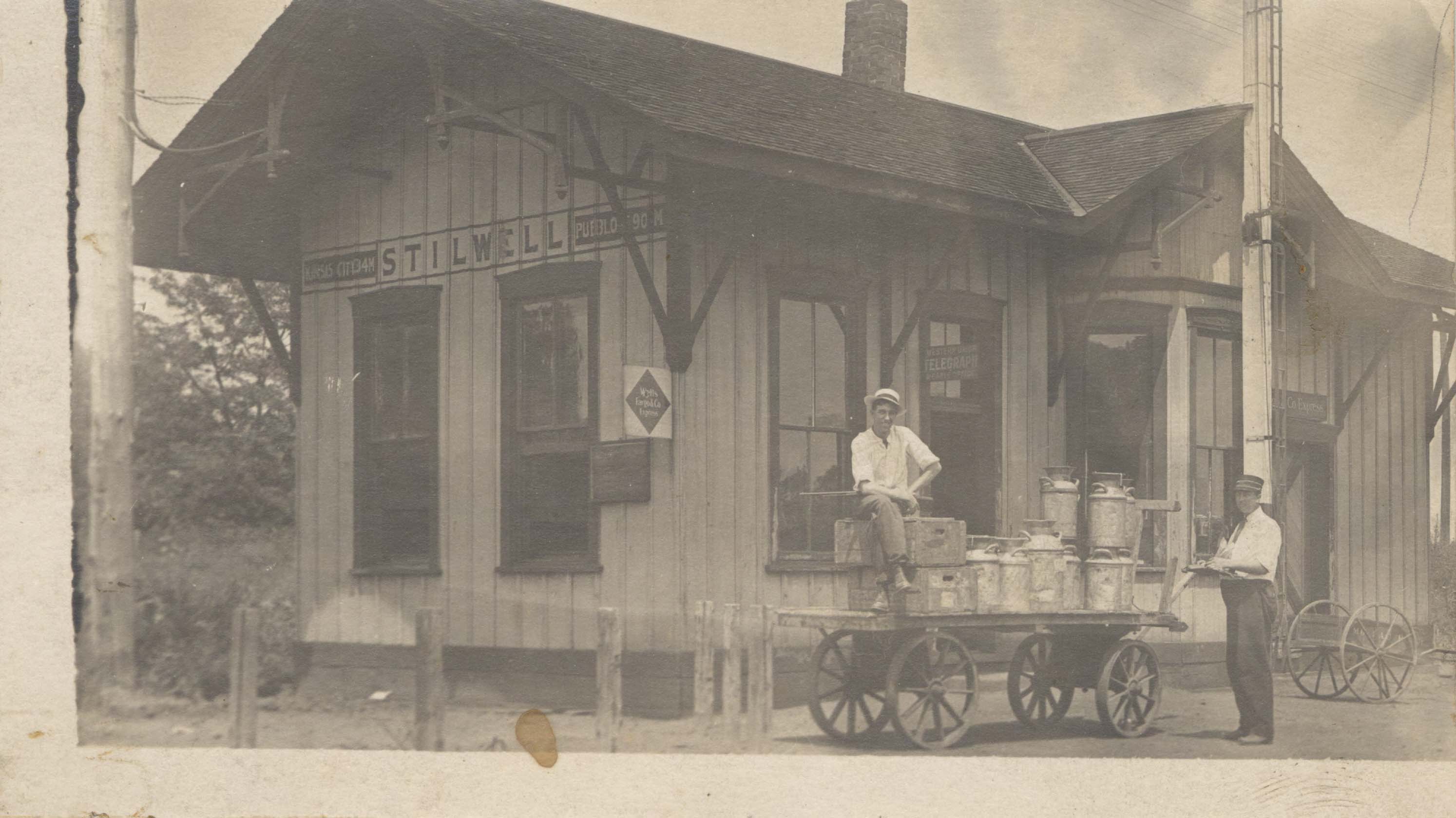
You can explore even more history of the railroads and Johnson County’s towns in the Museum’s special exhibit, TRAINS. If you have not had a chance to see the TRAINS exhibit, there is still time! The exhibit will close for good on January 13, 2024. The exhibit is included in regular Museum admission, and is open Monday through Saturday, 9am to 4:30pm. There will be a quarterly free day on November 22, when the TRAINS exhibit, as well as the rest of the Museum, will be open without charge. Learn more about the exhibit and upcoming programming at jcprd.com/museum.
